A system is taken from state A to state B along two different paths 1 and 2 . The heat absorbed and work done by the system along these two paths are Q1 and W1 and W2 respectively.
Q1=Q2
Q1+W1=Q2+W2
Q1−W1=Q2−W2
W1=W2
The correct Answer is:C
ΔU=Q+W
Path I: [Q1−W1]
[∵Q1→ heat absorbed (+ve),W1→ Work done by the system (-ve)]
Similarly,
Path II: [Q2−W2]
∴U is a state function ΔU=Q1−W1=Q2−W2
Topper's Solved these Questions
- BOOK - MARVEL PUBLICATIONCHAPTER - CHEMICAL THERMODYNAMICS AND ENERGETICSEXERCISE - MULTIPLE CHOICE QUESTIONS (PREVIOUS YEARS ENTRANCE EXAMS)76videos
CHEMICAL THERMODYNAMICS AND ENERGETICS
- BOOK - MARVEL PUBLICATIONCHAPTER - CHEMICAL THERMODYNAMICS AND ENERGETICSEXERCISE - MULTIPLE CHOICE QUESTIONS (TEST YOUR GRASP)50videos
CHEMICAL THERMODYNAMICS AND ENERGETICS
- BOOK - MARVEL PUBLICATIONCHAPTER - CHEMICAL THERMODYNAMICS AND ENERGETICSEXERCISE - MULTIPLE CHOICE QUESTIONS (Third Law of Thermodynamics)6videos
CHEMICAL THERMODYNAMICS AND ENERGETICS
- BOOK - MARVEL PUBLICATIONCHAPTER - CHEMICAL KINETICSEXERCISE - TEST YOUR GRASP50videos
CHEMICAL KINETICS
- BOOK - MARVEL PUBLICATIONCHAPTER - CHEMISTRIY IN EVERYDAY LIFE EXERCISE - TEST YOUR GRAPS24videos
CHEMISTRIY IN EVERYDAY LIFE
Similar Questions
A system is taken from state "A" to state "B" along two different paths,"1" and "2." The heat absorbed and work done by the system along these two paths are Q1 and Q2 and W1 and W2 respectively
View SolutionA system is taken from state a to state c along the path adc (figure). The amount of heat absorbed is 10cals and work done on the gas is 138J. Calculate the work done on//by the gas when 20cals of heat are absorbed in taking the system from state a to state c along the path abc
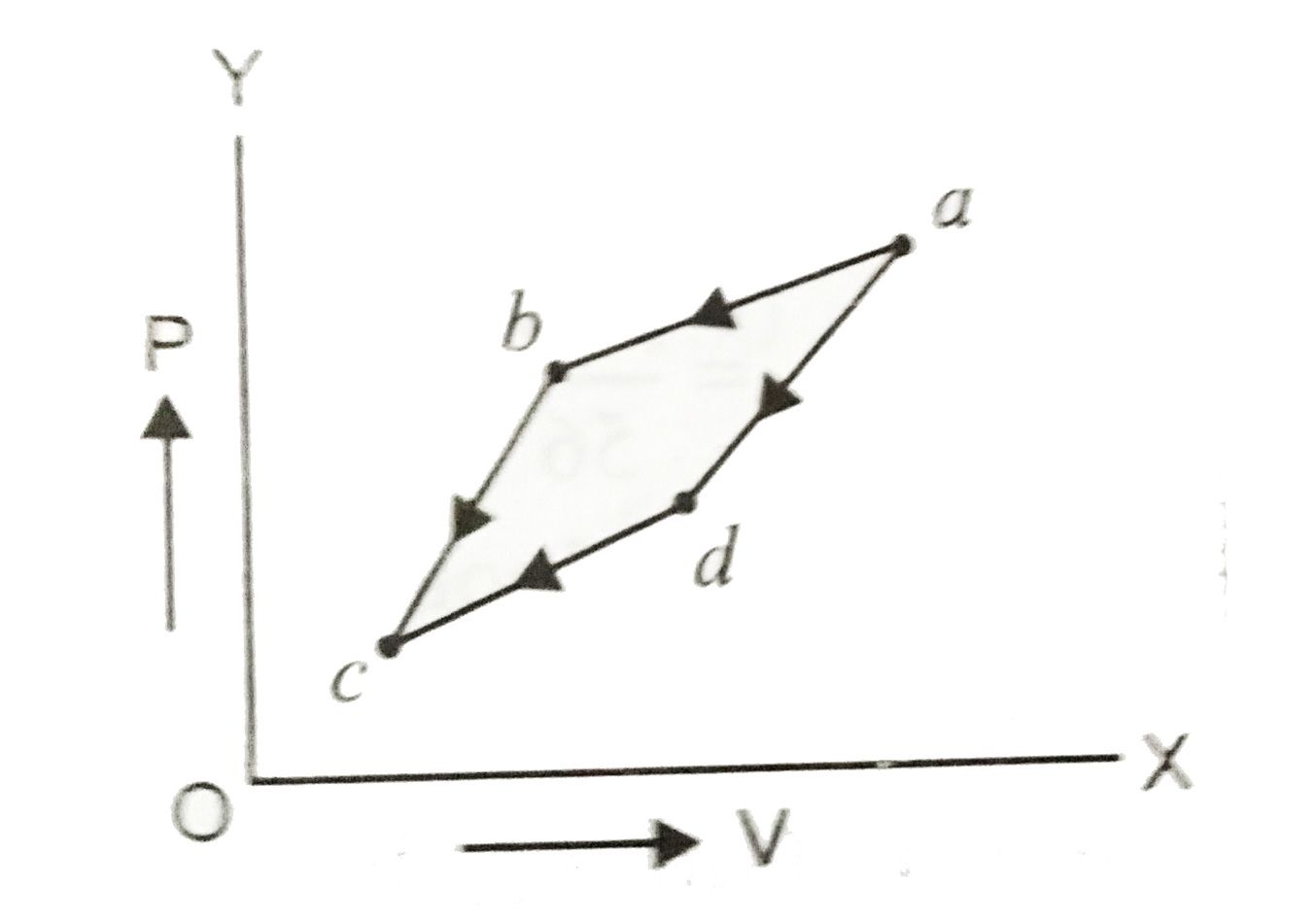 View Solution
View Solution
Knowledge Check
- Question 1 - Select One
A system is taken from state A to state N along two different paths 1 and 2. The heat absorbed and work done by system along these two paths are Q1 and Q2, and W1 and W2 respectively. Then
AQ1=Q2BW1=W2CQ1−W1=Q2−W2DQ1+W1=Q2+W2 - Question 2 - Select One
A system is taken from state A to B through three different paths 1,2 and 3. The work done is maximum is :
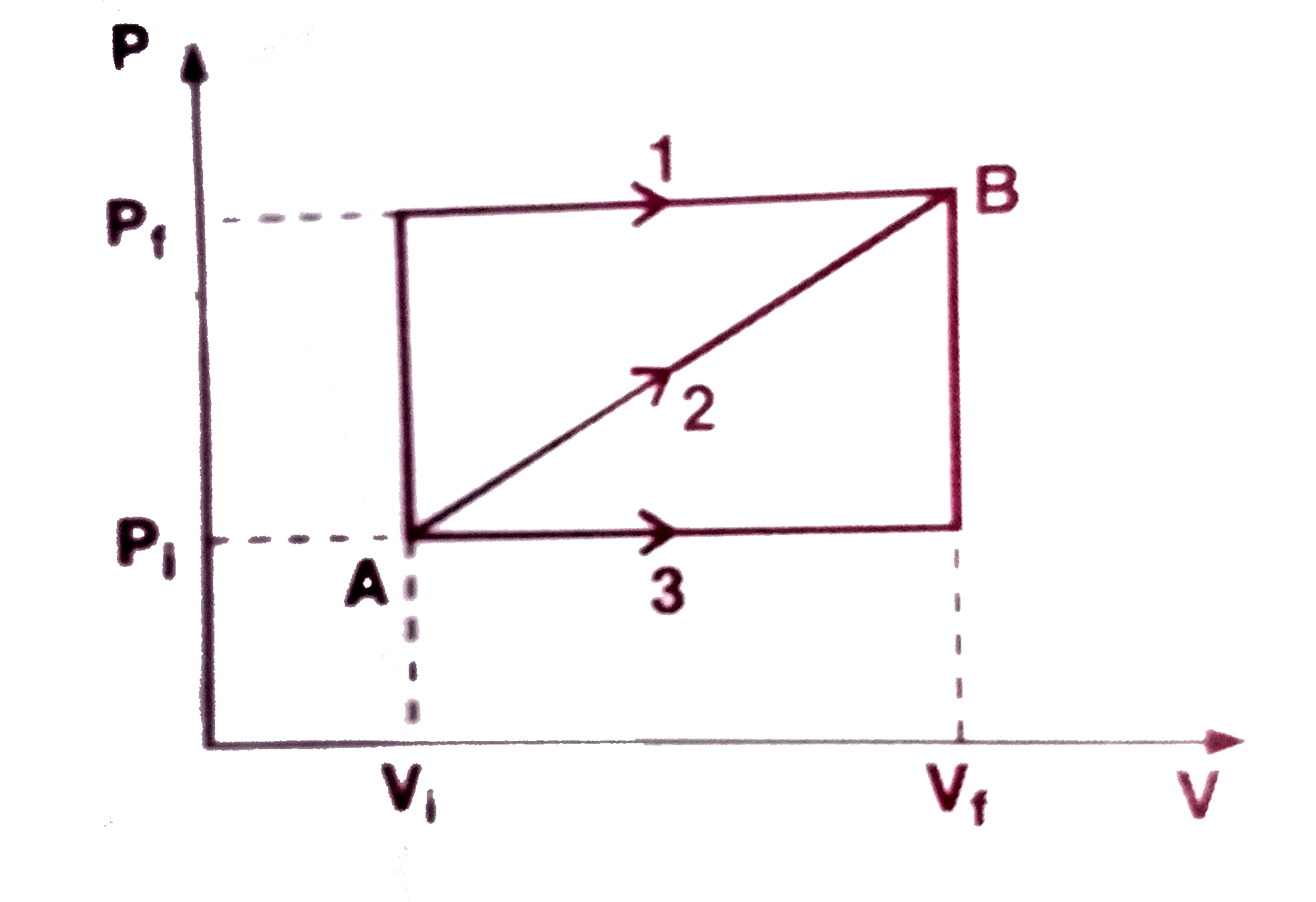 Aprocess 1Bprocess 2Cprocess 3Dequal in all magnitude
Aprocess 1Bprocess 2Cprocess 3Dequal in all magnitude - Question 3 - Select One
When a system is taken from stata a to state b along the path acb as shown in figure, 60 J of heat flows into the system and 30 J of work is done by the system. Along the path adb, if the work done by the system is 10 J, heat flow into the system is
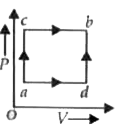 A100 JB20 JC80 JD40 J
A100 JB20 JC80 JD40 J
A thermodynamic system is taken from an initial state I with internal energy Ui=−100J to the final state f along two different paths iaf and ibf, as schematically shown in the figure. The work done by the system along the pat af, ib and bf are Waf=200J,Wib=50JandWbf=100J respectively. The heat supplied to the system along the path iaf, ib and bf are Qiaf,Qib,Qbf respectively. If the internal energy of the system in the state b is Ub=200JandQiaf=500J, The ratio QbfQib is
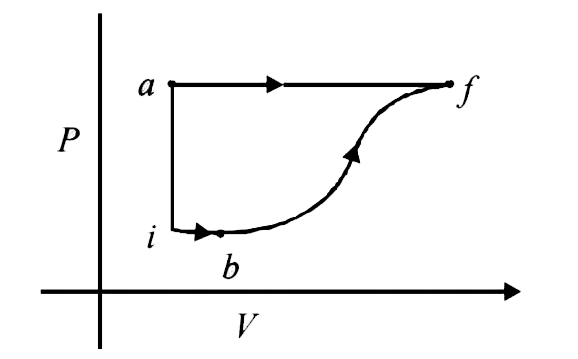 View Solution
View SolutionWhen a thermodynamic system is taken from an initial state I to a final state F along the path IAF, as shown in Fig. the heat energy absorbed by the system is Q=55J and work done by the system is W=25J. If the same system is taken along the path IBF, the value of Q=35J.
(a) If W=−15J for the curved path FI, how much heat energy is lost by the system along this path ?
(b) If U1=10J, what is UF ?
(d) If UB=20J, what is Q for the process BF and IB ?View SolutionIn given figure, when a thermodynamic system is taken from state A to state B via path ACB,100 cal of heat given to the system and 60cal work is done by the gas. Along the path ADB, the work done by the gas is 20cal. Find the heat flowing into the system in this case?
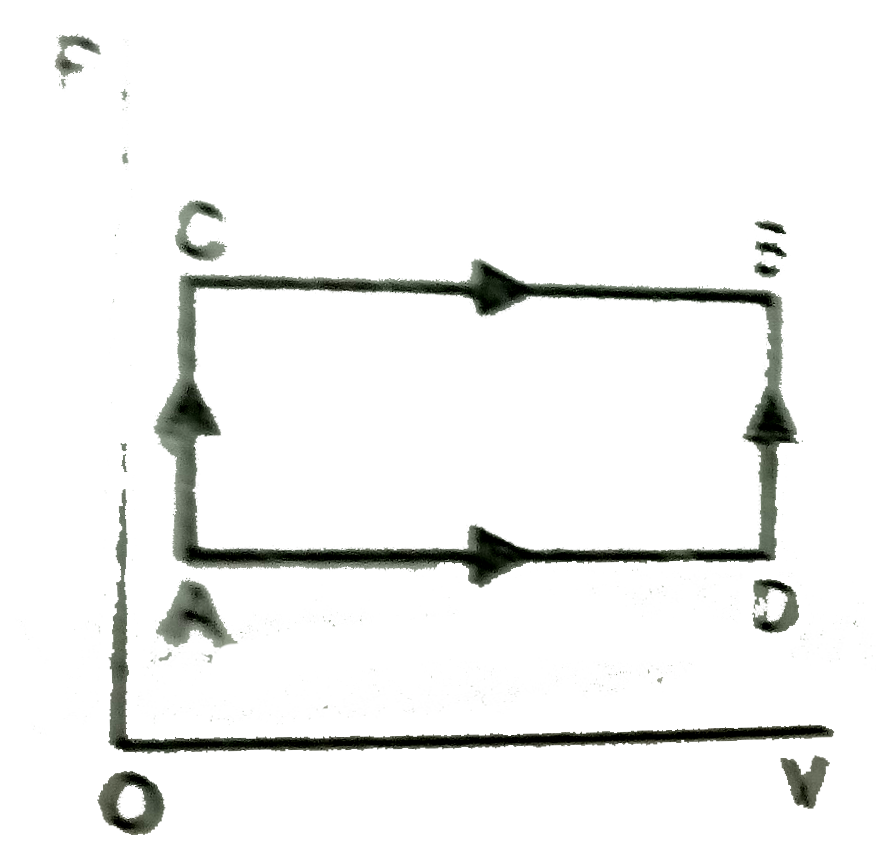 View Solution
View SolutionWhen a system is taken from state i to state f along the path iaf, it is found that Q=50calandW=20cal. Along the path ibf Q=36cal. W along the path ibf is
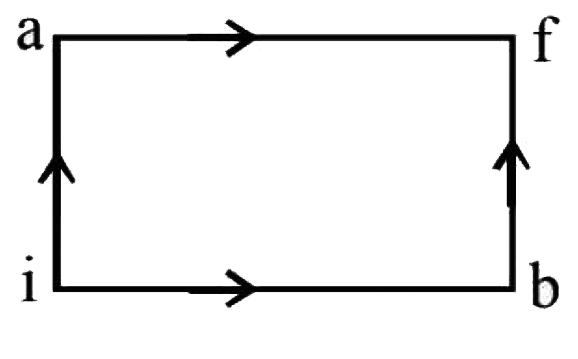 View Solution
View SolutionAn ideal gas can be taken form initial state 1 to final state 2 by two different process. Let ΔQ and W represent the heat given and work done by the system. Then which quantities is/are same in both process (where ΔU= internal energy of gas)
View Solution

